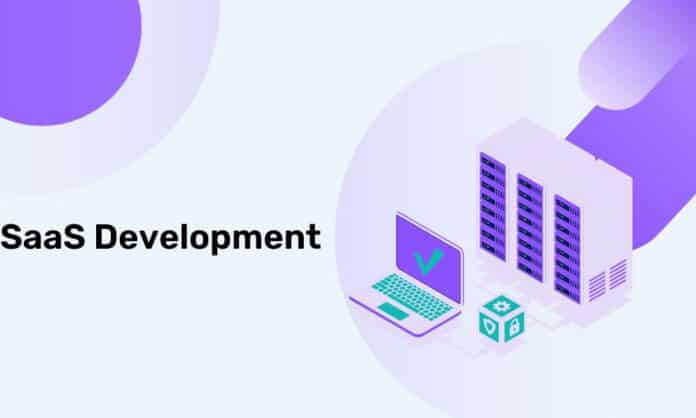In today’s fast-paced business world, staying ahead means adapting to innovative solutions. One such transformative solution is SaaS (Software as a Service). SaaS development has reshaped how enterprises operate, bringing efficiency, flexibility, and scalability to the forefront. Let’s dive deeper into why SaaS development is revolutionizing modern enterprises.
What Is SaaS Development?
SaaS development involves creating cloud-based software applications that businesses can access through an internet connection. Unlike traditional software requiring downloads or installations, SaaS runs directly from a web browser. It eliminates complexities like hardware installation, updates, and maintenance, making it a preferred choice for enterprises.
Businesses use SaaS solutions for various operations, such as managing customer relationships, handling finances, streamlining communication, and improving collaboration. These applications are hosted by the SaaS provider, ensuring constant availability and seamless performance for users.
Why SaaS Development Is Vital for Modern Enterprises
SaaS development is not just a passing trend; it’s a necessity for businesses aiming to stay competitive. Traditional software models often require significant investments in hardware, infrastructure, and IT staff. SaaS eliminates these burdens, offering cost-effective, flexible, and scalable solutions.
With SaaS, businesses benefit from easy access, as these applications are compatible with any internet-enabled device. Moreover, SaaS solutions ensure enterprises always work with the latest tools since updates and improvements happen automatically on the cloud.
Key Benefits of SaaS Development
1. Cost Savings
One of the most appealing aspects of SaaS is its cost-effectiveness. Unlike traditional software, which demands hefty upfront investments in licenses, servers, and infrastructure, SaaS follows a subscription-based model.
With SaaS, businesses pay a predictable monthly or yearly fee. This helps in accurate budgeting and eliminates unexpected expenses. Additionally, SaaS providers handle maintenance, upgrades, and security, reducing the need for a large in-house IT team.
2. Scalability and Flexibility
Modern enterprises grow quickly, and their needs evolve. SaaS solutions are inherently designed to scale. Whether it’s adding more users or expanding functionality, SaaS platforms make scaling seamless.
For instance, an enterprise experiencing rapid growth can instantly increase its capacity by upgrading its SaaS subscription. Moreover, these solutions offer customizable features, ensuring businesses only pay for the tools they use.
3. Enhanced Collaboration
SaaS fosters improved teamwork by providing platforms for real-time collaboration. Teams can work together on shared documents, spreadsheets, and projects without being physically present.
SaaS tools like Google Workspace or Microsoft 365 allow simultaneous editing, instant feedback, and seamless sharing of information. This capability ensures higher productivity and better communication among team members, regardless of their location.
How SaaS Development Is Revolutionizing Industries
1. E-commerce
SaaS platforms have made it easier for e-commerce businesses to manage operations, from inventory tracking to customer support. These tools allow businesses to scale effortlessly during peak seasons and integrate with third-party systems like payment gateways and marketing platforms.
2. Healthcare
SaaS has modernized healthcare by enabling secure patient data storage and telemedicine services. Medical professionals now access patient records in real time and offer consultations through virtual platforms, ensuring improved care.
3. Education
Online learning platforms powered by SaaS have transformed education. Institutions deliver virtual lessons, manage student performance, and facilitate interaction through SaaS solutions, ensuring learning continuity.
The Future of SaaS Development
The SaaS landscape is evolving rapidly, with innovations like artificial intelligence, machine learning, and IoT integration becoming integral to modern platforms. These technologies promise smarter tools that adapt to user behavior, automate repetitive tasks, and provide data-driven insights.
In the future, SaaS will continue to prioritize personalization and user-centric design. Platforms will become more intuitive, ensuring businesses of all sizes can leverage their potential without requiring technical expertise.
Steps for Enterprises to Embrace SaaS Development
1. Identify Business Needs
Before adopting a SaaS solution, businesses must analyze their specific requirements. This helps in selecting tools that align with their goals.
2. Choose the Right Provider
Selecting a reliable SaaS provider is critical. Look for providers with proven track records, excellent customer support, and robust security measures.
3. Plan Integration
Integrating SaaS tools with existing systems is crucial for a smooth transition. Ensure compatibility to avoid disruptions.
4. Train Your Team
Introducing new software requires employee training. Familiarizing teams with the platform ensures maximum utilization and productivity.
Conclusion
SaaS development is undoubtedly a game-changer for modern enterprises. By offering cost savings, scalability, and enhanced collaboration, SaaS empowers businesses to thrive in a competitive landscape. Whether it’s e-commerce, healthcare, or education, SaaS continues to transform industries with its innovative solutions.
As technology advances, SaaS will remain at the forefront of enterprise solutions, enabling businesses to achieve new heights with minimal effort. The time to embrace SaaS development is now, as it paves the way for a more efficient, collaborative, and scalable future.
FAQs
1. What is the main advantage of SaaS development?
SaaS provides cost-effective solutions by eliminating hardware requirements and offering subscription-based pricing for businesses.
2. Can small businesses benefit from SaaS?
Yes, SaaS is highly scalable and affordable, making it ideal for small businesses to grow without heavy upfront costs.
3. Is SaaS secure for sensitive business data?
Reputable SaaS providers implement robust security measures like encryption, ensuring data protection and compliance with regulations.
4. How does SaaS improve team productivity?
SaaS tools enable real-time collaboration and access from anywhere, ensuring teams work efficiently without geographical constraints.
5. What industries benefit most from SaaS solutions?
Industries like e-commerce, healthcare, education, and finance benefit greatly, as SaaS addresses their scalability and operational needs.
Check out: Web Plus SaaS Business Model Explained!

